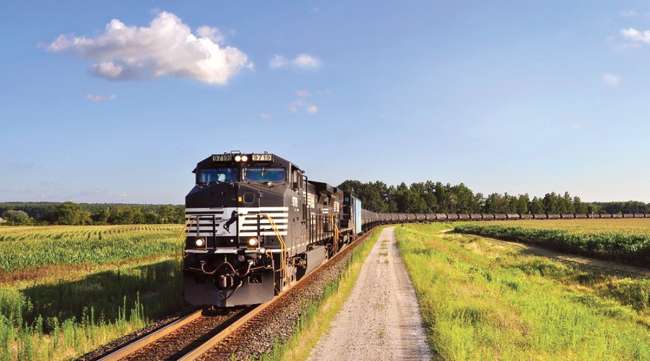Senior Reporter
Most Railroads Nearing Positive Train Control Implementation

[Stay on top of transportation news: Get TTNews in your inbox.]
An automatic braking system for railroads is either in advanced field testing or operational on 98% of the required route miles mandated by Congress, according to a recent assessment by federal regulators.
The Federal Railroad Administration announced May 15 that positive train control technology is on 56,541 route miles of the nearly 58,000 route miles mandated by Congress.
Based on data compiled as of March 31 by FRA, the technology had yet to be activated on about 1,100 route miles. Congress directed railroads to fully implement PTC systems by Dec. 31, a two-year extension of an initial deadline.
Notably, the technology governed operations on the required lines either owned or controlled by freight railroads and other freight host railroads, according to the agency.
Class I freight railroads include Norfolk Southern combined railroad subsidiaries, BNSF Railway, CSX Transportation, Kansas City Southern Railway, Grand Trunk Corp., Soo Line Railroad and Union Pacific Railroad.

Batory
“We continue to work directly with all ‘to be compliant’ railroads — providing technical support and guidance as requested — to enable them to satisfactorily meet the congressional deadline,” agency Administrator Ronald Batory said May 15. “I’m pleased with the growing number of railroads that have reached critical milestones, and continue to encourage all of them to help each other overcome any remaining challenges from their respective lessons learned.”
With the end-of-the-year deadline fast approaching, the agency announced it is directing resources to assist railroads at risk of failing to fully implement FRA-certified and interoperable PTC systems.
FRA determined host railroads appearing to be unable to meet the implementation deadline include New Jersey Transit, TEXRail, Northeast Illinois Regional Commuter Railroad Corp. (Metra) and New Mexico Rail Runner Express (Rio Metro).
“We strongly urge the collaborating railroads to work in a safe, focused and aggressive manner to meet this end-of-year deadline,” Batory said. “FRA has provided nearly $2.6 billion in grants and loans and thousands of hours of technical assistance to help railroads fully implement PTC systems.”
Last month, the Government Accountability Office issued a report that determined rail operators had signaled optimism about an ability to implement PTC systems ahead of the Dec. 31 deadline.
“With less than a year left to complete PTC, FRA and most railroads have completed equipment installation and are now focused on the testing stages,” the report said.
Testing stages mean field testing, revenue service demonstration and interoperability testing.
According to the Association of American Railroads, Class I railroads invested $11.47 billion in the development, installation and implementation of PTC as of Dec. 31, 2019.

Jefferies
“America’s freight railroads will finish the job on PTC by the final December 2020 deadline,” Ian Jefferies, CEO of AAR, said earlier this year. “PTC — coupled with other advanced technologies — drives down risk and fuels railroads’ next leap forward to ensure our people, infrastructure and equipment are safer than ever. Railroads are committed to an accident-free future, and fully implementing PTC continues our industry’s progress toward that ultimate target.”
The U.S. Department of Transportation has explained PTC technology would assist in the prevention of train-to-train collisions, overspeed derailments, movement of trains through a switch in the wrong position, and prevention of train incursions into established work zones.
The National Transportation Safety Board spotlighted PTC in its “Most Wanted List” of priorities for policymakers. The independent agency affirmed, “PTC must be fully implemented before the extended deadline to ensure the safety of railroad passengers and the people who live and work near railroads.”
Want more news? Listen to today's daily briefing:




